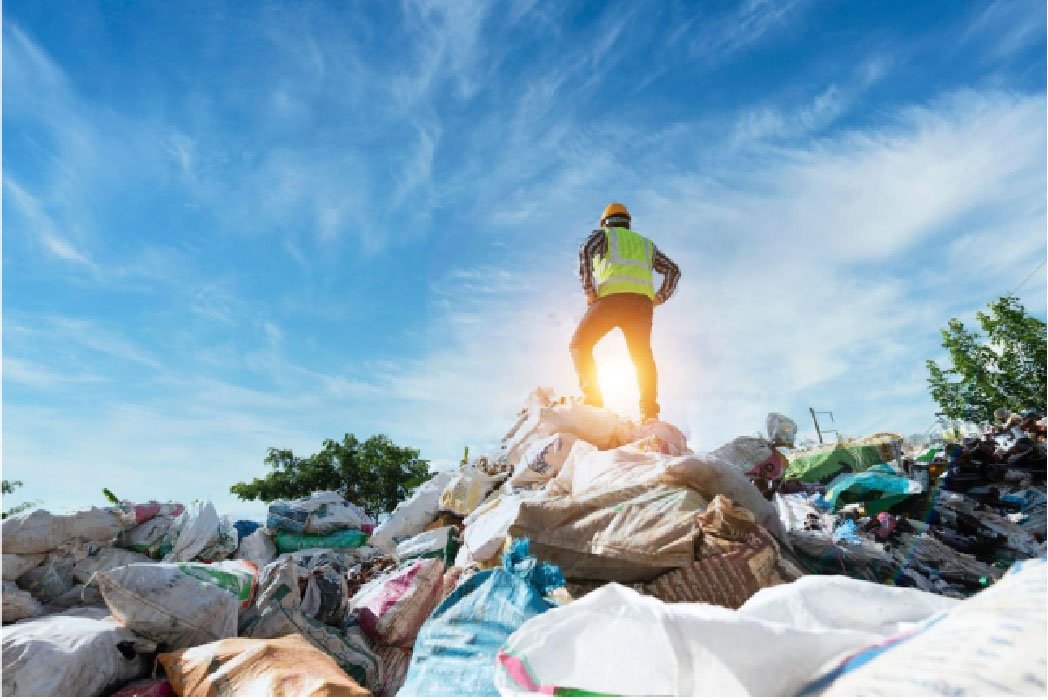Business
A Tech-Driven Zero-Emission Future: The Innovative Path for Landfills

As global attention on climate change intensifies, landfills, as significant sources of greenhouse gas emissions, are under increasing pressure to transform. In the journey to achieve carbon neutrality, “zero emissions” has become the ideal goal for landfill operations. Through technological innovation and scientific management, landfills may completely transform into environmentally friendly green facilities in the future.
The Emission Challenges of Landfills
Landfills are a major source of methane, a greenhouse gas 25 times more potent than carbon dioxide. Despite the gradual improvement of waste treatment technologies, large amounts of methane are still released during the anaerobic decomposition of organic waste in landfills. For example, in the United States, according to the Environmental Protection Agency (EPA), landfills account for 16% of national methane emissions. This demonstrates that achieving zero emissions requires overcoming multiple challenges in technology, management, and regulations.
The Core Role of Methane Detectors
In the path toward zero emissions, high-precision methane detector is an essential tool. These devices are not only used to monitor gas concentrations but also provide scientific evidence for formulating and optimizing mitigation measures. The following are key roles that methane detectors play in future landfills:
Real-Time Monitoring and Early Warning
High-precision methane detectors can record changes in methane concentrations in landfills in real-time and transmit the data to a central monitoring system through IoT technology. If there is an abnormal rise in concentration, the system can immediately issue an alarm to prevent potential safety accidents.
Optimizing Gas Capture Systems
Through real-time data analysis, operators can optimize the layout and efficiency of the gas collection pipeline system in the landfill. For instance, a large landfill in Germany introduced an advanced methane monitoring system, which improved the methane capture rate by over 20%.
Supporting Verification of Zero Emission Goals
In Europe and the United States, more and more environmental regulations require landfills to submit detailed methane emission data reports. High-performance methane detectors can provide the precise data required for compliance, supporting businesses in fulfilling regulatory obligations while pursuing zero emissions goals.
International Cases: Integration of Technology and Policy
California, USA: Collaborative Regulation and Technology
In California, landfills have implemented strict methane reduction policies. For example, a large landfill deployed an IoT-connected methane detector network, which not only met state regulatory requirements but also improved gas collection strategies through data analysis, reducing methane emissions by approximately 15,000 tons annually.
Sweden: Integration of Resource Utilization and Emission Reduction
In Sweden, landfills focus on resource recovery. Through accurate methane monitoring and efficient collection, these landfills convert methane into biogas to supply residents, achieving both resource recycling and generating significant economic benefits for landfill operators.
Pathways to Achieving Zero Emissions
Integrated Technologies
Future landfills will achieve comprehensive real-time monitoring and prediction of methane emissions by integrating IoT, cloud computing, and artificial intelligence technologies. Algorithms based on big data will further improve the efficiency of gas capture and energy conversion.
Policy Support and Market Incentives
Government support and incentive measures are crucial to driving the zero-emissions vision. For instance, the European Union’s carbon credit trading system allows landfills to earn carbon credits by reducing methane emissions, which can be traded or used to offset other emission metrics, providing economic returns to businesses.
Public and Community Engagement
Achieving zero emissions requires not only technological support but also public participation. Through transparent data sharing and community education, public trust and support for landfill environmental work can be enhanced.
Conclusion
The realization of the zero-emissions vision for landfills is the result of the joint action of technological advancements, policy support, and societal consensus. Methane detectors, as an indispensable technological tool in this process, play a core role in precise monitoring and data support, paving the way for a greener future. As more countries and enterprises join the reduction efforts, the “green transformation” of landfills will no longer be just a dream, but a tangible reality.
For More Information Visit Coopermagazine
-

 Celebrity1 year ago
Celebrity1 year agoWho Is Jennifer Rauchet?: All You Need To Know About Pete Hegseth’s Wife
-

 Celebrity1 year ago
Celebrity1 year agoWho Is Mindy Jennings?: All You Need To Know About Ken Jennings Wife
-

 Celebrity1 year ago
Celebrity1 year agoWho Is Enrica Cenzatti?: The Untold Story of Andrea Bocelli’s Ex-Wife
-

 Celebrity1 year ago
Celebrity1 year agoWho Is Klarissa Munz: The Untold Story of Freddie Highmore’s Wife
















